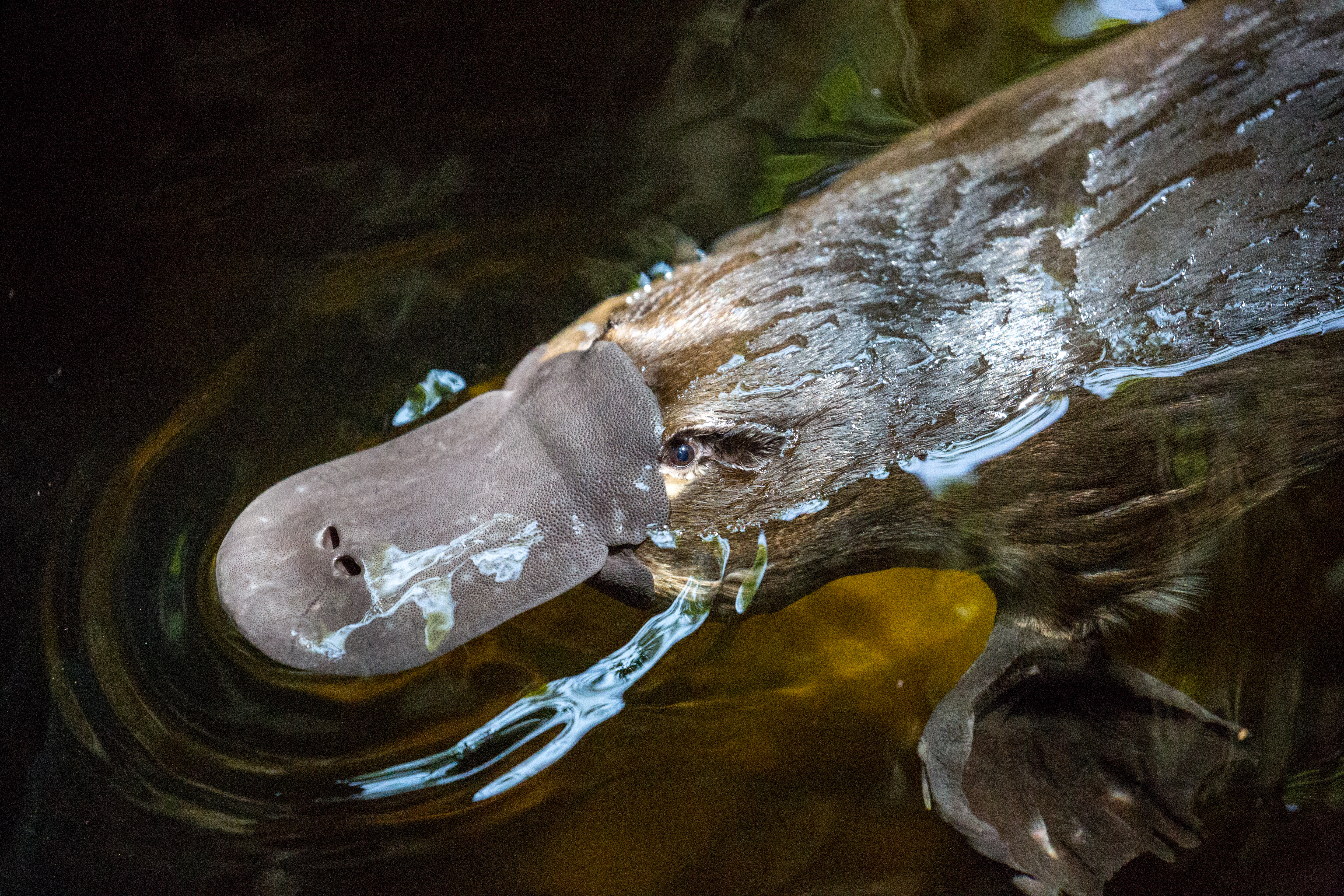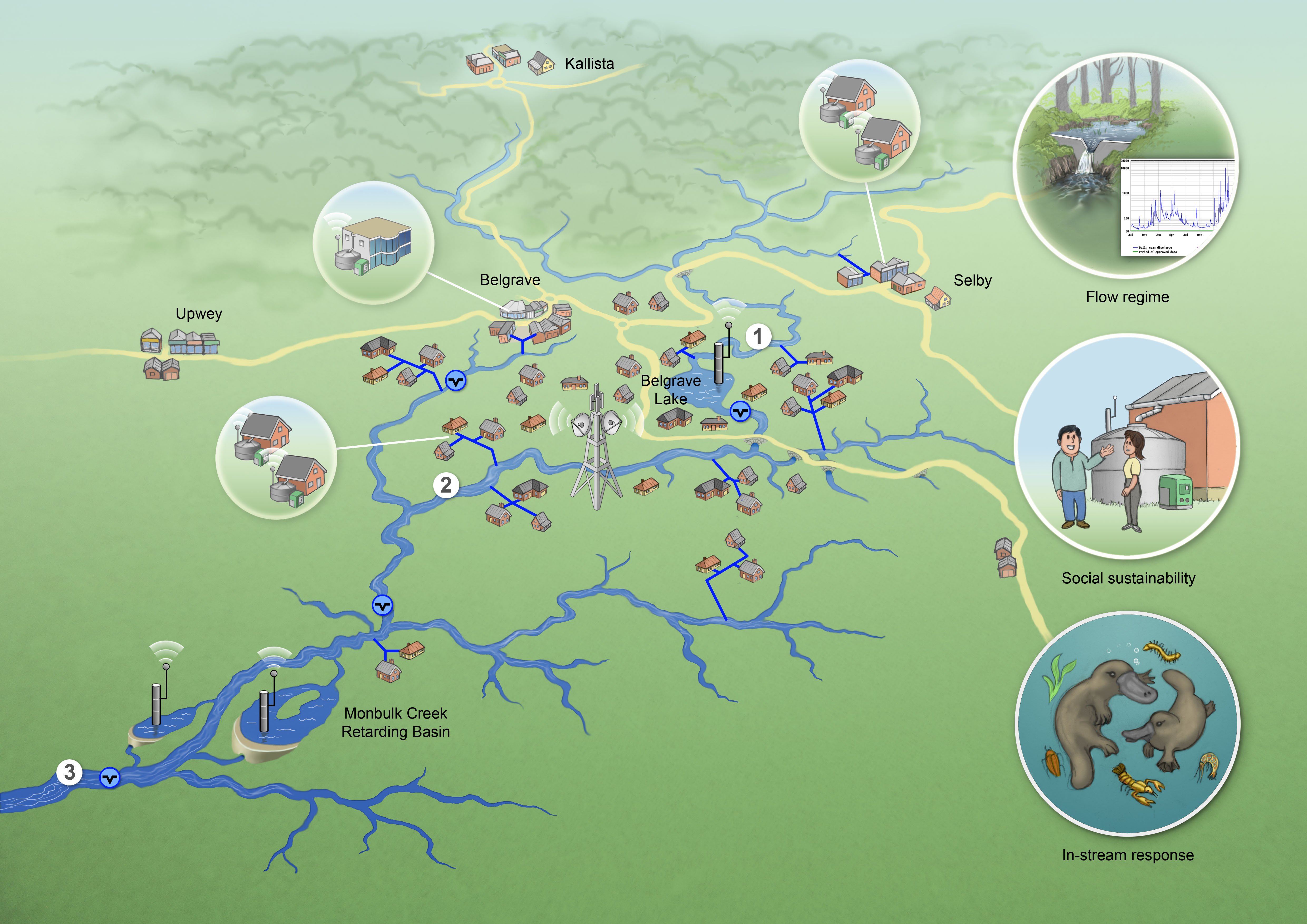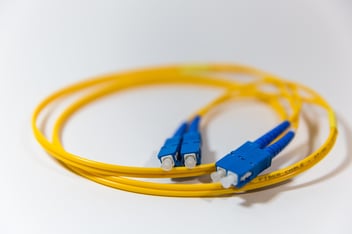Using smart network technology to help protect platypus populations

In a bid to protect platypus populations in east Melbourne’s Monbulk Creek, an innovative new project is establishing a smart water network, consisting of newly installed tanks and existing water storages, to manage flows in the waterway.
Listed as vulnerable in Victoria, platypus in Monbulk Creek struggle during very dry flows, but also peak stormwater flows, necessitating a new approach to mitigating climate extremes within the waterway to create a more stable habitat.
Led by Melbourne Water and the University of Melbourne in partnership with Yarra Ranges Council, South East Water, DEECA and the Australian Research Council, the project will be presented at Ozwater’24 by Melbourne Water Research Manager Dr Rhys Coleman and the University of Melbourne’s Dr Darren Bos.
Coleman said the project came out of Melbourne Water’s Healthy Waterways Strategy 2018, which was co-designed with key stakeholders.
“We drew upon data we have collected over the decades in waterways across Melbourne, and were able to look at where we see certain animals occurring, like platypus, which takes the primary focus in Monbulk Creek,” he said.
“We were able to use information we have about where these animals occur, where they don't occur, and what the conditions are like in those sites. This helps us predict where they may be across the landscape.
“Importantly, we were able to use those models to inform us about how projected urban growth and climate change are likely to impact platypus habitat. We identified that platypus are not likely to do very well in many parts of Melbourne, including Monbulk Creek.
“A large part of this is because of the drying we are expecting under a changing climate. Platypus really need good, steady flows of water to support their large feeding requirements, and that’s where we typically find them.”
Coleman said projections indicate that platypus within the Monbulk Creek system are likely to be lost if flows in the urban waterway are not managed for habitat protection, and that complementary works, like streamside revegetation and litter management, will also be needed.
“If we lose them from Monbulk, then there will be no more platypus in the whole of the Dandenong major catchment. That’s a big red flag,” he said.
“We know flows are important. We know that we can’t let flows get too low at certain times of the year. But the high, flashy flows that we get from stormwater also impact the platypus’ food resources, including water bugs.
“The flashy flows also present a risk to juveniles in burrows, as the burrows get flooded. We needed to find a way to try to manage both the peak storm flows, but also protect those dry-weather flows, mainly to make sure there is a good, healthy amount of food for platypus.”
A new way forward
Coleman said the need to augment flows in Monbulk Creek year-round demanded a new way of approaching urban waterway management, which led the project team towards utilising smart network technology.
“Our challenge is in providing the right amount of water at the right time. By using smart network technology, we are exploring the opportunities involved in establishing a hybrid centralised-decentralised network of storages,” he said.
Releases from existing urban lakes will provide the majority of the dry flow relief, Coleman said, while water tanks installed on private and public property along Monbulk Creek will primarily capture and store peak flows from stormwater.
“To some degree we’ve already established smart networks for drinking water and wastewater networks. This project is about taking that approach, building on it, and bringing into the urban waterway management setting,” he said.
“Although a lot of the environmental water is going to come from the lakes, the rainwater tanks are really useful in helping to manage those peak stormwater flows. We are able to capture the runoff from the roofs of houses before it gets into the creek.”
The smart network enables real-time visualisation of the water levels in all of those storages across the network, as well as real-time, remote-controlled releases from all the storages.
“Behind that monitoring and control is the decision making that’s enabled. If we see big storm events coming in, we can move on releasing water from tanks so that they have more capacity to help reduce the risk of localised flooding and impacts of excess stormwater on the creek,” Coleman said.
“We have also developed a user interface, so people can visualise their tank and see their water usage, as well as how the creek is going.”
Exploring outcomes
Given this approach to urban waterway management is new, Coleman said there will be a lot of research involved as the project develops.
“We are definitely front runners. We don’t know of this being trialled anywhere else. Whenever we talk about this idea, we find that people are really taken by it. It’s an amazing opportunity and a great innovation, and it’s gaining a lot of interest, both nationally and internationally,” he said.
“There is a research element to it, too. This is about looking at how the network performs, and developing some decision algorithms around how much water to release and when.
“Part of the research will look at stream benefits from the network, including whether or not we are seeing changes in platypus foraging behaviours, and so on.”
Coleman said the project is also a demonstration for how urban water could be managed differently across Melbourne, and more broadly.
“Our eye is not just on Monbulk Creek, it’s the demonstration site. We have a bigger vision in mind for fundamentally changing the way we manage urban water,” he said.
“There will also be an element of social research involved in the demonstration. As we engage with the tank users, and understand their behaviours and perspectives, we can learn about what would be needed to roll this out to other parts of Melbourne for other objectives.”
Establishing the network
At present, the first 100 tanks are being installed on properties along Monbulk Creek, but the project partners are aiming to expand that to 300 tanks, Coleman said.
“We have recently applied for funding for an extra 200 tanks, although we think 100 is the right amount for the pilot, in terms of what we want to achieve. The more tanks we can get, the more impact we are going to have in terms of stormwater management and environmental protection,” he said.
“This is a demonstration of managing urban water in a very different way that really enables households as part of the solution. We have reached out to the community with the opportunity for them to be part of protecting platypus in a proactive way.”
As well as being internationally significant, the platypus is one of Australia’s iconic species, and Coleman said doing everything possible to protect the species is of utmost importance.
“We are really genuinely worried about the platypus. Only recently were they listed as threatened in Victoria. We have been monitoring them since the mid 1990s and they are declining,” he said.
“We should be doing all that we can to try and turn this around for them. But there are also a whole range of other species that will benefit from a stabilised flow regime at Monbulk Creek.”

Interested in learning more about how the project team is protecting the platypus population at Monbulk Creek with the new smart water network?
Register for Ozwater’24 here.

